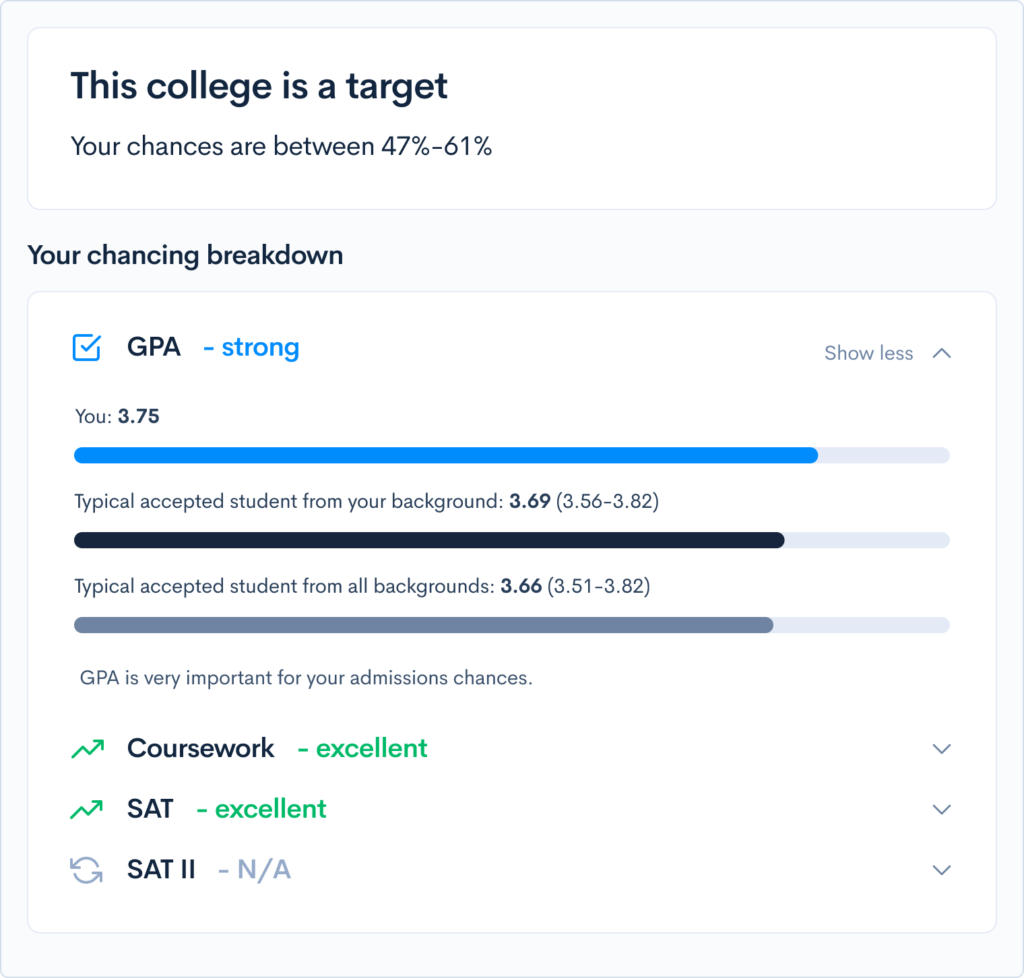What is MIT Known For?
The Massachusetts Institute of Technology (MIT) is perhaps the most famous STEM school in the world. The prestigious university, established in 1861, shares the city of Cambridge, Massachusetts with another globally recognized and sought-after institution of higher learning: Harvard University. With famous graduates like Buzz Aldrin, Ilene S. Gordon, and Kofi Annon, MIT continues to be a world leader in academics and research. Here are the other standout aspects of this top school. Location: Cambridge, Massachusetts Undergrad Enrollment: 4,600 Acceptance Rate: 7.3% Middle 50% SAT: Math 790-800/Verbal 730-780 Middle 50% ACT: 35-36 MIT is consistently ranked in the top 10 national universities, and is best-known for its STEM programs. A strong MIT applicant typically must have excellent grades and standardized test scores. That said, the university is constantly trying to break the “nerd” stereotype and wants to accept lab geniuses who can also win a class presidency. Ideal applicants should have extensive STEM experience balanced with achievements in other academic areas. MIT is one of the few schools where there is actually zero advantage to applying Early Action. So, you don’t need to rush your application, and you should take special care to make your essays as engaging as possible (see our MIT essay guide). You should also keep in mind that MIT is not on the Common App, so you should budget extra time to fill out their application and double-check your info. In the past, MIT has boasted renowned faculty like Noam Chomsky, Paul Krugman, and Alan Lightman. Current faculty include Angela Belcher, Frank Wilczek, and Sherry Turkle. Majors, called courses and known by numbers rather than names, are divided among five schools: School of Architecture and Planning, School of Engineering, School of Humanities, Arts, and Social Science, MIT Sloan School of Management, and School of Science. Along with popular majors like Aerospace Engineering, Computer Science, Mathematics, and Biomedical Engineering, the university (perhaps surprisingly to some) offers majors like Writing, Philosophy, and Women’s and Gender Studies. However, even these humanities majors often have a STEM intersection and focus, and students who select them graduate with a Bachelor of Science (SB). Along with pursuing joint degrees, such as combined study in the humanities with science or engineering, and minors, students may cross-register for courses at Harvard, Wellesley College, and Massachusetts College of Art and Design (MassArt). Wellesley students may pursue a double degree with MIT, earning both a BA from Wellesley and an SB from MIT over the course of five years. (Students must be admitted to Wellesley first.) Both students and faculty win numerous prestigious awards and fellowships. Last academic year (2019–2020), 11 MIT students, including graduating seniors and graduate students, accepted Fulbright Fellowships. The aptly-named MIT Engineers compete in NCAA Division III. The men’s ice hockey team was one of the first programs of its kind in the U.S., organized in 1899. Greek life is popular on campus, with 25 fraternities and six sororities. Slightly less than half of all undergraduates participate. There are plenty of other extracurricular activities available, too, both academic and recreational. Students can join the Outing Club, the Solar Electric Vehicle Team, the MIT Society for Women Engineers, the Black Students’ Union, G@MIT, and hundreds of other groups. MIT is home to a variety of traditions. One example is the Brass Rat, in which a group of sophomores convenes to design their class ring, part of a tradition dating back to 1929 (brass reflects the color of the gold ring, and a rat resembles a beaver, MIT’s mascot). The university also celebrates the Bad Ideas Festival in January, which features activities, challenges, and attractions, which have included roller coasters in the past. Another January event is the MIT Mystery Hunt, a competition in which teams go on a quest to find “the coin” by solving complex puzzles. The winners go on to organize and write the following year’s Hunt. To celebrate Pi Day, MIT usually releases admissions decisions on March 14th with much fanfare. A majority of MIT students live on campus, while approximately a quarter live in MIT-approved Greek houses or independent living groups. Dorms have faculty families, which serve as heads of house and are selected based on their shared interests with students in the residence halls. These homes also have area directors that act as support people and residential student governments that organize programs, funded by taxes agreed-upon by student residents. MIT is need-blind for all applicants, both domestic and foreign. It is committed to meeting the full demonstrated need of all students. In the 2019–2020 academic year, the average need-based award was $50,483, with 33% of MIT undergraduates paying no tuition. When you attend MIT, you’ll have access to additional resources offered by the university. They include free access to the MIT Museum, located on campus, which includes exhibits, an Idea Hub, workshops, performances, and more about STEAM topics (Science, Technology, Engineering, Arts, Math). Students and faculty even lead demonstrations. It is also home to the annual Cambridge Science Festival. Students can also receive discounted tickets to arts and cultural institutions such as the Museum of Fine Arts and the Boston Ballet. For students looking to get around town, there are many options, including campus shuttle services. MIT also subsidizes 50% of students’ MBTA T-passes, which provide transportation to and from Boston and nearby areas. MIT is located right along the Charles River, offering stunning views of the Boston skyline (particularly at sunset). Students can go for walks along the bike bath by the river, and can easily walk to take public transport into the city of Boston. Boston is a major U.S. city known for its history, sports, medical institutions, food, and more. Students will have no problem finding something to do. The city is also home to an international airport, and is well-connected to other cities by train and bus. Cambridge itself feels more like the suburbs in many places, but there are still hubs of activity, such as Central Square, Kendall Square, Davis Square, and Porter Square. MIT is one of the most selective universities in the country, and it would be considered a reach school for any student. Still, your personal chances of admission can still vary according to factors like GPA, test scores, extracurriculars, and more. CollegeVine’s free admissions calculator will help you find out your real odds of admission to MIT and hundreds of other selective colleges and universities throughout the U.S. It’s free to use — and, you’ll get tips to increase your chances of getting into your dream school, whether it’s MIT or another top college. What’s Covered:
Overview of MIT Admissions
Unique Aspects of MIT
Academics

Extracurriculars
Traditions
Dorms
Financial Aid
Resources
Location
What Are Your Chances of Acceptance at MIT?



